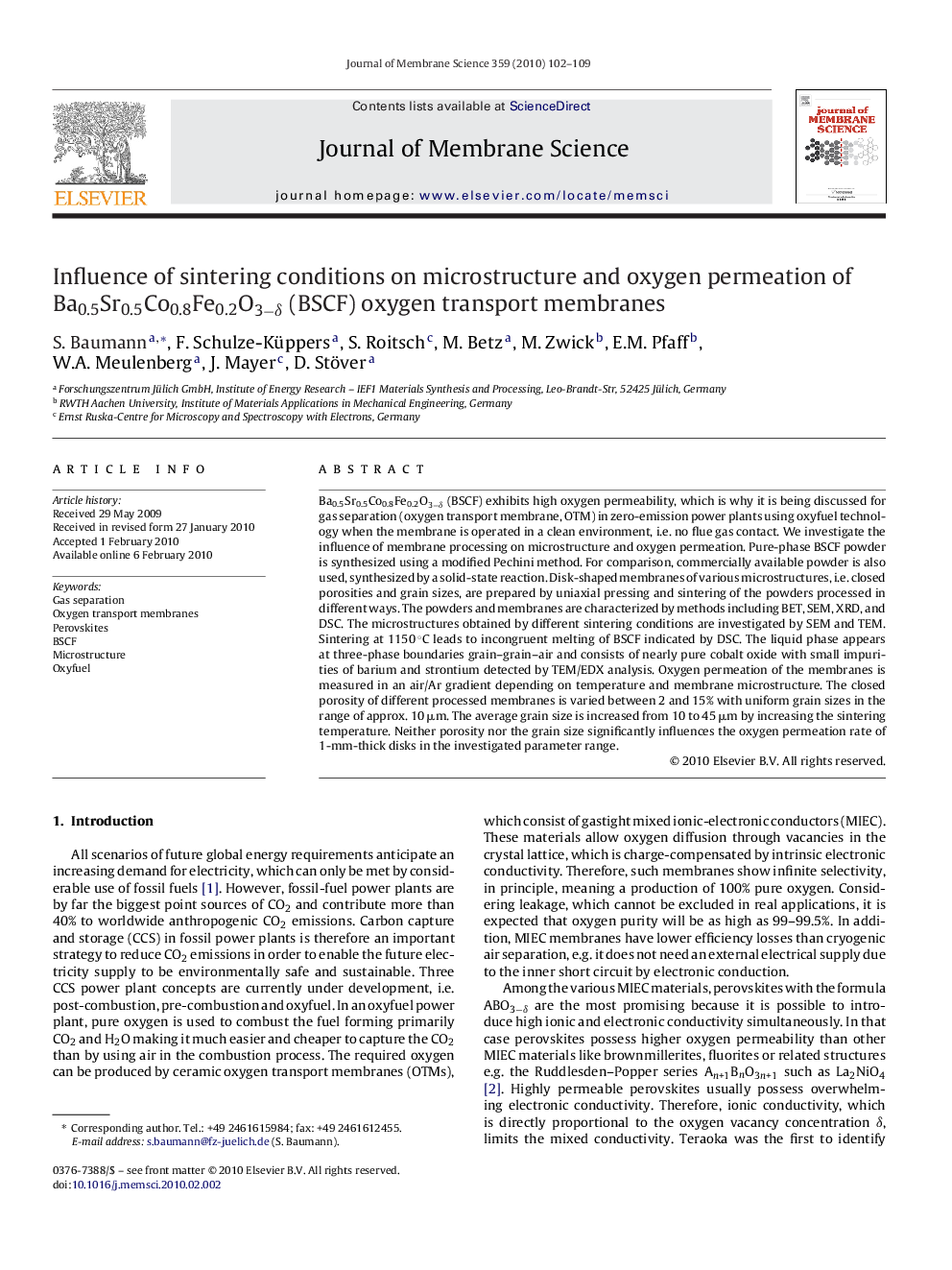| Article ID | Journal | Published Year | Pages | File Type |
|---|---|---|---|---|
| 636348 | Journal of Membrane Science | 2010 | 8 Pages |
Ba0.5Sr0.5Co0.8Fe0.2O3−δ (BSCF) exhibits high oxygen permeability, which is why it is being discussed for gas separation (oxygen transport membrane, OTM) in zero-emission power plants using oxyfuel technology when the membrane is operated in a clean environment, i.e. no flue gas contact. We investigate the influence of membrane processing on microstructure and oxygen permeation. Pure-phase BSCF powder is synthesized using a modified Pechini method. For comparison, commercially available powder is also used, synthesized by a solid-state reaction. Disk-shaped membranes of various microstructures, i.e. closed porosities and grain sizes, are prepared by uniaxial pressing and sintering of the powders processed in different ways. The powders and membranes are characterized by methods including BET, SEM, XRD, and DSC. The microstructures obtained by different sintering conditions are investigated by SEM and TEM. Sintering at 1150 °C leads to incongruent melting of BSCF indicated by DSC. The liquid phase appears at three-phase boundaries grain–grain–air and consists of nearly pure cobalt oxide with small impurities of barium and strontium detected by TEM/EDX analysis. Oxygen permeation of the membranes is measured in an air/Ar gradient depending on temperature and membrane microstructure. The closed porosity of different processed membranes is varied between 2 and 15% with uniform grain sizes in the range of approx. 10 μm. The average grain size is increased from 10 to 45 μm by increasing the sintering temperature. Neither porosity nor the grain size significantly influences the oxygen permeation rate of 1-mm-thick disks in the investigated parameter range.
